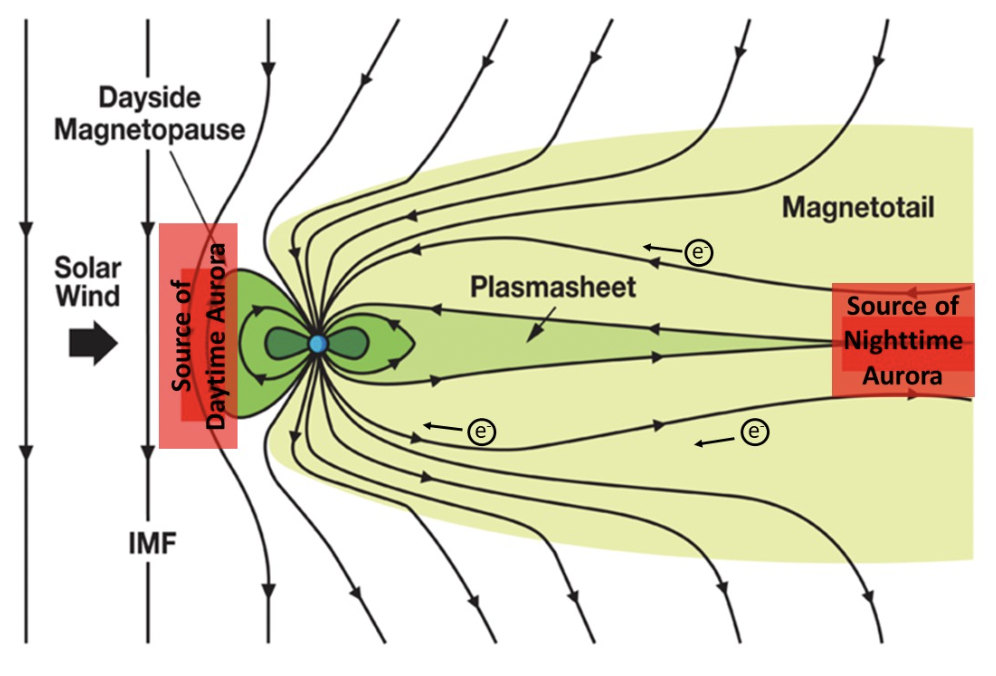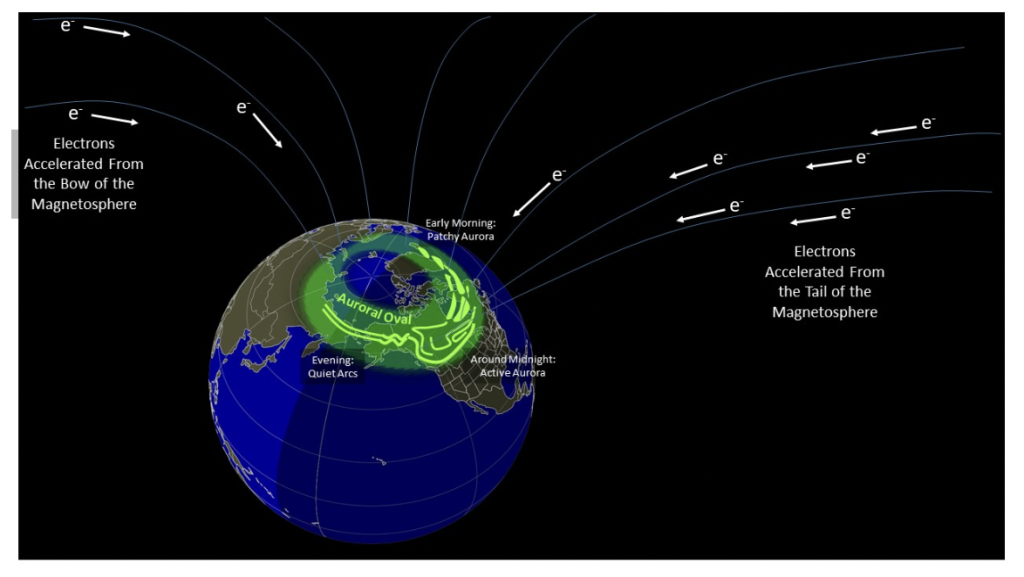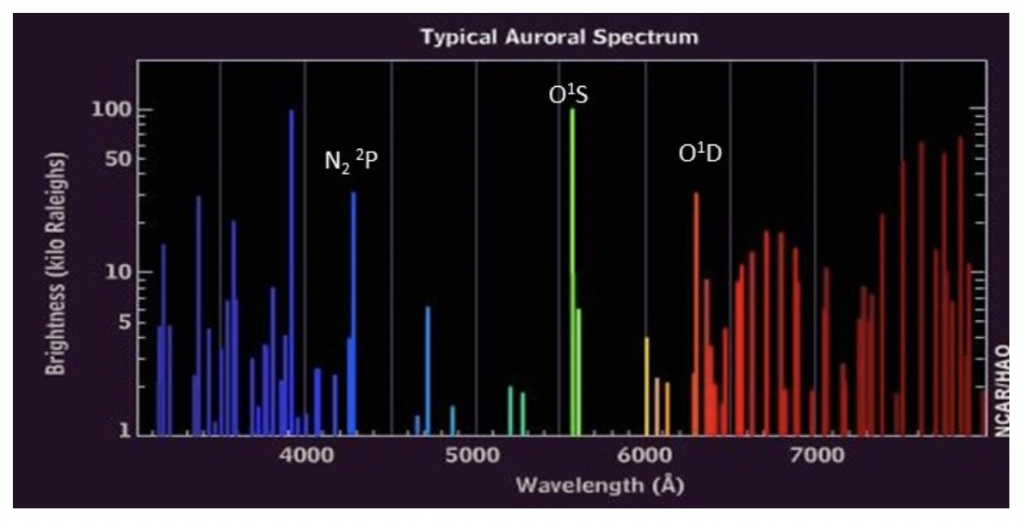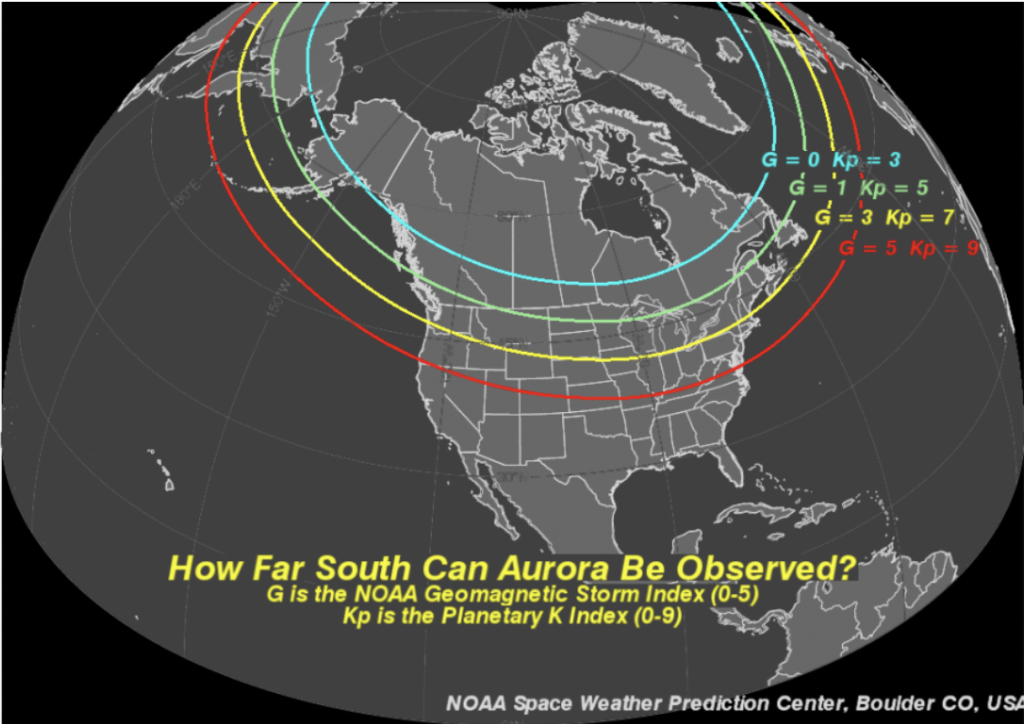In a notable astronomical event, Colorado witnessed a remarkable display of the Aurora Borealis during the early hours of the morning, a phenomenon not seen at such intensity since 2005. This celestial occurrence, scientifically known as the Aurora Borealis, stems from complex interactions between solar particles and Earth’s magnetosphere.
Electromagnetic Interactions in Earth’s Magnetosphere
The Aurora Borealis results from the collision of energized electrons with the upper atmosphere’s oxygen and nitrogen atoms. These electrons, accelerated by processes in the magnetosphere’s downwind tail and lower altitude auroral field lines, follow Earth’s magnetic field to the polar regions. Upon collision, they transfer energy to the atmospheric particles, causing them to emit light.


Geomagnetic Dynamics and Auroral Morphology
The shape and intensity of the aurora are intricately linked to geomagnetic activity levels. During periods of heightened activity, the auroral ovals expand, allowing for widespread visibility. Auroral forms vary, from simple arcs to complex curtains and swirling patterns, reflecting the dynamic nature of geomagnetic disturbances.
Coloration: A Spectrum of Excitation
The colors observed in the Aurora Borealis correspond to different energy states of excited atoms and molecules in the atmosphere. The predominant green hue, originating from atomic oxygen in the 1S state, is often accompanied by rare occurrences of deep red emissions from oxygen in the 1D state. Other colors, such as purple, result from nitrogen excitation, with their appearance influenced by altitude and atmospheric density. Many Coloradans experienced more of a pink color which is due to the height at which Oxygen reacted to solar particles in the atmosphere, roughly 150 miles above the surface.

Forecasting and Monitoring
Forecasting the Aurora Borealis involves monitoring solar wind conditions and geomagnetic indices. Short-term predictions rely on real-time measurements of solar wind parameters, providing insights into imminent auroral activity. Long-term forecasts, spanning days to years, entail tracking solar phenomena like coronal mass ejections and coronal holes, which impact Earth’s magnetosphere and auroral dynamics.

As scientific understanding and monitoring capabilities advance, so too does our appreciation for the intricate processes shaping Earth’s auroral displays. Such events serve as reminders of the dynamic interactions unfolding within our planet’s magnetosphere and beyond.
